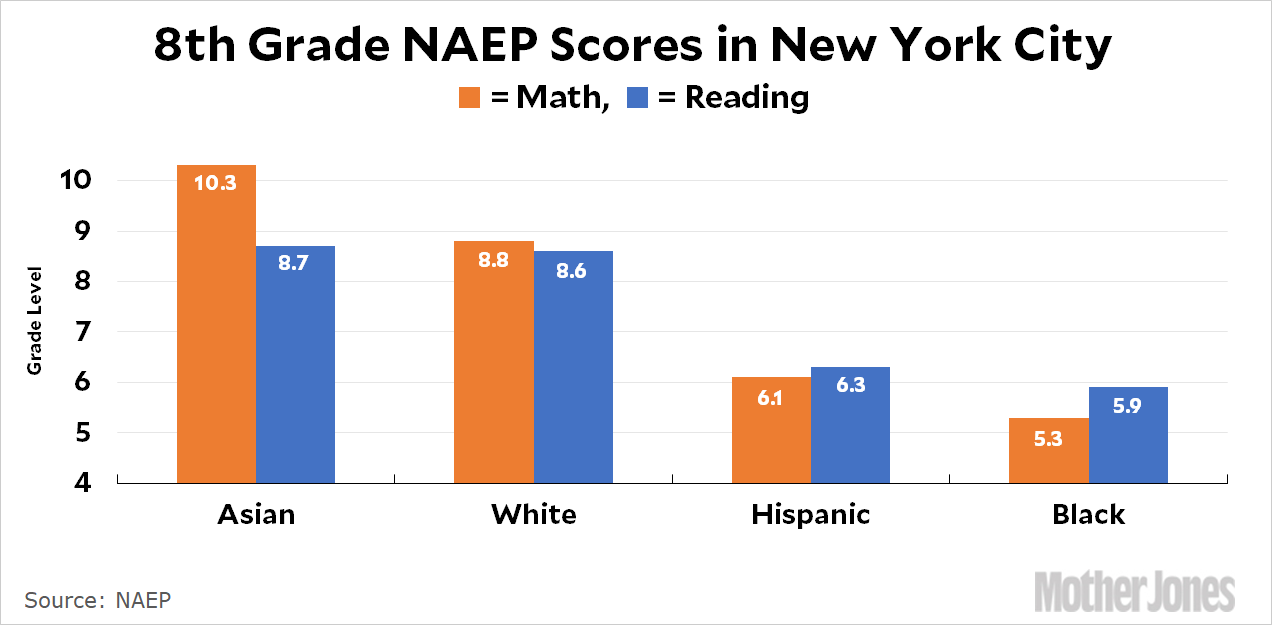Today the New York Times features another story about the city’s eight “elite” high schools and the fact that they admit hardly any black or Hispanic students. However, despite all the blathering about “test prep” being the big reason for this, the real reason is obvious: black and Hispanic students are way behind Asian and white students. Here are the “gold standard” NAEP scores for 8th grade New Yorkers:

I’ve converted the raw scale scores into grade levels using the national average as 8th grade level and 10 points representing one grade level. I did this because the raw scores are sort of meaningless to most people and I wanted to make it dramatically clear just how big the gaps are. Keep in mind that this is not just 8th grade, before most kids have had years of intensive test prep, but it’s the NAEP, which no one studies for. Test prep might make a difference on these scores, but no one thinks it’s more than a half a grade level or so. This is the big problem that New York City (and the rest of the country) need to address.
But beyond that, I’m curious about something: why is eight a sacred number? When New York City kids go to college, they’ll have a huge variety of schools to choose from. The top students will get into Harvard. The next level will get into UCLA or the University of Michigan. The next level will get into UC Riverside. The level below that will get into Cal State Long Beach. And then there will be the kids who go to a community college.
Why not have similar levels in New York City? It might not be practical for smaller school districts, but New York could do it. Nor is this the dreaded “tracking.” The eight elites would remain the Harvards of the school district, but another eight would be the UCLAs and another eight the UC Riversides. They’d all be academic high schools oriented toward college prep, and the admission criteria could be either the current test or something else.
In fact, doesn’t New York City already have something like this? I don’t mean the specialized schools for dance or music, but the general high schools with admissions criteria. How selective are they? How well do they serve black and Hispanic kids? Why are the eight elites, which serve less than 5 percent of New York’s students, such an obsessive focus? As important as they are, the next five percent, and the next ten percent after that, are probably at least as important. Why don’t we have a little more focus on them?

















